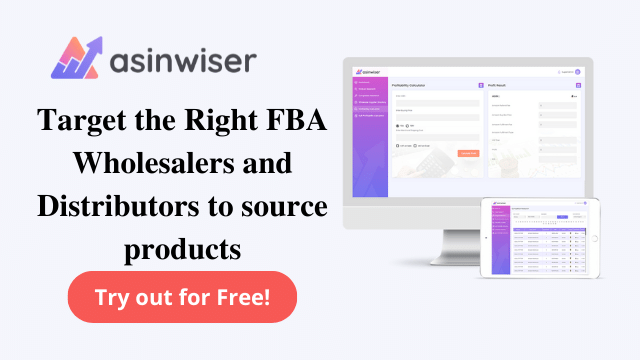
A Detailed Guide: Save Amazon Selling Fees and FBA Fees
A Detailed Guide: Save Amazon Selling Fees and FBA Fees
Certain aspects affect the real cost of selling on Amazon. Moreover, there are a few simple strategies you can use to cut down on your Amazon selling fees.
In this article, we have discussed thoroughly how you can cut Amazon FBA fees, Amazon referral fees, Amazon Storage Expenses, and other inbound fees with some practical tips.
Amazon Referral Fees
Referral fees on Amazon are fairly straightforward. Furthermore, the majority of Amazon’s categories have a flat 15% fee. Some categories, however, are slightly higher or lower.
For example; Automotive has a referral fee of only 12%, whereas jewelry has a 20% referral fee. You can be resourceful and purposefully miscategorize your items to save money on referral fees.
However, be wary of this because the item category is a major ranking factor on Amazon, and it can have a negative impact on SEO.
Be aware that almost all Amazon categories have a $1 minimum referral fee. Unless you sell very low-value items, this should not affect you.
Amazon FBA Fulfillment Fees
Fulfillment fees on Amazon FBA are an area where sellers frequently underestimate costs. There are several ways that sellers undervalue costs:
●Miscalculation of an item’s size tier and/or Amazon Measuring an item incorrectly
●The application of dimensional weight to a bulky item (also known as ‘dim-weighting’).
●Failure to consider that, depending on the size category, Amazon adds a packing weight of 0.25-1 pound.
Before you start selling something, you need to figure out what size category it belongs in. Furthermore, once you’ve sent your items to Amazon, double-check that the dimensions Amazon recorded match what you measured. Amazon makes a lot of errors. Request that Amazon re-measure your items if there are any discrepancies.
You must also be aware of dimensional weight at all times. Weight x Length x Height /139 is the formula for calculating the dimensional weight.
Furthermore, as your shipping weight, Amazon will use the greater of your actual weight and dimensional weight (UPS, FedEx, and most major carriers use similar formulas). Being dim-weighted can significantly increase your Amazon FBA shipping fees.
Finally, many sellers are unaware that all items are given a packing weight by Amazon. For regular size items, Amazon adds 0.25 pounds, and for over-large items, Amazon adds 1 pound. This can cause you to be pushed up to other size tiers, which can have a significant impact on your life.
An item weighing 0.99 lbs will have 0.25 lbs of packing weight added to it, causing it to be moved from the under 1 pound standard size category to the over 1 pound category, virtually doubling the FBA fees.
Standard Vs Oversize
Oversize and standard large items have a big fee difference, as any experienced vendor knows. A standard size item, according to Amazon, is one that:
●Weighs no more than 20 pounds.
●Less than or equal to 18 inches in length (or longest side).
●Less than or equal to 14 inches in width (or median side).
●Less than or equal to 8 inches in height (or shortest side).
Moreover, when your things first arrive at fulfillment facilities, Amazon will cubiscan them, and then at regular intervals after that. When calculating the measurements, keep in mind that the cubiscan will take into account any protrusions in the packaging.
Because of this, the cubiscan dimensions will frequently be slightly larger than your measurements. If you’re close to approaching the limit of one measurement for your normal size goods, add additional padding to your dimensions.
Amazon Storage Fees
Amazon storage fees are determined by the item’s size, category, and season. Nevertheless, during peak season, which runs from October to December, Amazon charges almost 300 percent more. It also charges roughly 40% more for standard-size items than it does for big items.
While Amazon storage fees appear to be low on a per-item basis, they are typically 100 percent to 800 percent higher than those charged by a third-party logistics provider, especially during peak season.
|
Amazon Storage Fees (Per Cubic Foot) |
|||
| Non-Peak (Jan-Sept) | Peak (Oct-Dec) | Long-Term Storage (365+ days) | |
| Standard Size items | $0.69 | $2.40 | $6.90 |
| Over-Size Items | $0.48 | $1.20 | $6.90 |
When long-term storage expenses are included, storage fees become even more debilitating. It’s best to avoid storing merchandise at Amazon for more than 6 months, as the cost per pallet of items reaches a whopping $240+.
Inbound FBA Fees
Landing your things at Amazon FBA facilities comes at a substantial expense. Third-party logistics providers charge both inbound shipment and handling fees (if you are using one).
In general, if you can sell through your inventory in 6 months or less, you should try to ship directly to Amazon without using a 3PL. We have a great post about delivering entire containers and LCL freight to Amazon.
Using a third-party logistics provider increases expenses, transit delays, and the chance of out-of-stocks.
If you are an online Amazon seller, then you must have an intelligent tool that will guide your business towards success by targeting the brand story, right keyword, products research, analyzing competitors, fba calculator, fba fee calculator and so much more. Get your ticket to success today!
Share this:
Subscribe to Our Newsletter
Recent Post
- Top 13 Amazon Inventory Management Tools for FBA Sellers in 2023
- Asinwiser: The Ultimate OMSGuru Alternative for Amazon Sellers
- Repricer.com Alternative: Why Asinwiser is the Superior Choice for Amazon Sellers
- Aura Alternative: Why Asinwiser is the Superior Choice for Amazon Repricing
- Maximize Amazon Sales with Asinwiser: The Superior Amazon Repricer & Revenue Analytics Tool

